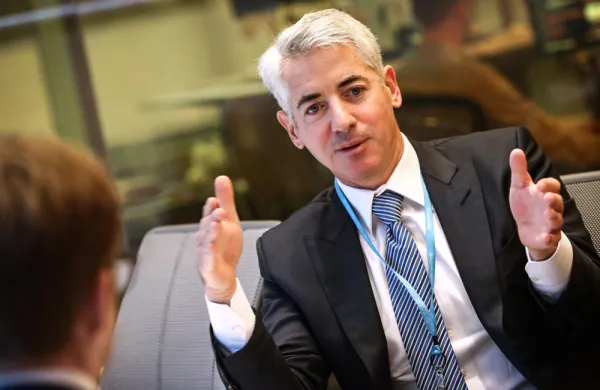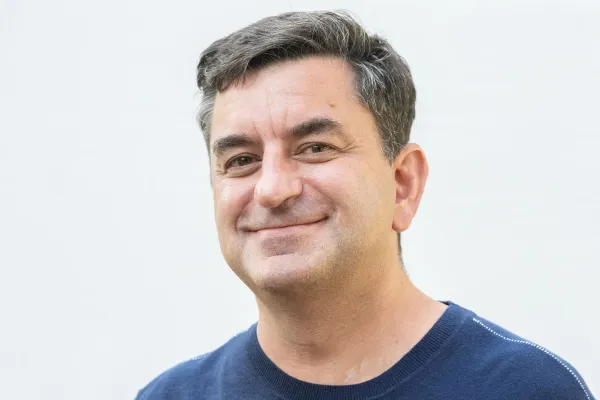CHARLES (CHIP) MCCLURE HAS SPENT his entire professional career in and around the Detroit automotive industry, having joined Ford Motor Co. as an engineer straight out of the U.S. Navy in 1979. But for the past three years, as CEO of ArvinMeritor, a $9.2 billion-in-revenues auto-parts maker, he has been distancing himself and his company from Detroit, as the Big Three U.S. automakers reel from declining sales and high labor costs.
As part of an ongoing restructuring plan, McClure, 53, sold Arvin's emissions technology business in May, a move that cut its dealings substantially with the Big Three. Before the divestiture, the company derived 15 percent of its North American light-vehicle systems sales from General Motors Corp., Ford and Chrysler. That figure now stands at 8.5 percent. One big goal of McClure's restructuring -- which aims to trim $150 million from annual costs within two years by closing 13 plants, among other cuts -- is to further reduce Arvin's dependence on the U.S. by boosting revenues in the fast-growing Asian market. In July, Arvin formed a joint venture with Shanghai's Chery Automobile Co. to design and manufacture chassis systems, a deal that should help it supply customers more cheaply.
Under McClure, Arvin has avoided much of the pain visited on rivals like Dana Corp., Delphi Corp. and Collins & Aikman Corp., all of which have gone bankrupt in recent years as Detroit's fortunes soured. When McClure succeeded retiring CEO Larry Yost in August 2004, the company had $983 million in debt due to mature in 2007 and 2009. Wary of a cyclical downturn, McClure directed CFO James Donlon to refinance and pay down most of those obligations. The long-term debt is down to $93 million, which doesn't begin to mature until 2015. Meanwhile, the pension plan, underfunded by $659 million two years ago, is now close to 95 percent funded, with a shortfall of $165 million.
Still, work remains to be done. Troy, Michiganbased Arvin swung to a loss for the quarter ended June 30 and reined in its earnings guidance for the year, citing restructuring-related costs. And McClure, through his membership in CEO lobbying group the Business Roundtable and a seat on the board of the National Association of Manufacturers, is pushing U.S. health care reform. Health care costs are one of the biggest competitive disadvantages for U.S. auto and auto-parts makers.
McClure, who has a bachelor's degree in mechanical engineering from Cornell University and an MBA from the University of Michigan, chatted recently with Institutional Investor Assistant Managing Editor Justin Schack.
What's your view of the long-term prospects of GM, Ford and Chrysler?
The challenge is really here in North America, where they've seen some shifts in market share. Ford and GM are actually doing okay in Europe, and in China, GM is doing great. So the industry is still vibrant, but the days of having just the Big Three in North America are over. I think in the future we're going to have something more like the European market, where there are six to eight players and nobody with a dominant share.
How are their challenges affecting your business?
In the light-vehicle business, we have far less exposure to the Big Three than we used to, so the impact is fairly small. They're still important customers. We're not abandoning them. But part of our strategy is limiting the amount of exposure we have to them in the markets where they're challenged. Two thirds of our business is commercial vehicles, and that is being influenced now by weakness in the North American heavy truck market. That's a cyclical market, and right now it is at the absolute bottom because of emissions regulations that went into effect at the beginning of this year. We knew about that, and we've been planning for it and managing through it. During the last downturn, in 2001, our margins dropped by more than 6 percent from the year before to the trough. This time the drop in margins has been about 1.5 percent. To be candid, the margins on an absolute basis were lower last year than in 2001 because of material costs, but when you look at trough over trough, we've been able to show some improvement in how we manage the down cycle.
What can you do to avoid these cycles in the future?
In commercial vehicles you have to diversify your product portfolio and diversify globally. We've been successful in Europe, where growth is surprisingly strong. They also had an emissions change, in October, but the market is up 8 percent and is expected to stay up for a couple of years because of demand for new vehicles in Eastern Europe. Our supply chain is really getting stretched, as are our customers, and we're all talking about adding capacity.
What about for light vehicles?
Long term, we want one third of our overall business to be in Asia or with Asian customers. We're underrepresented in Japan, and we're putting on a full-court press there. We have built an engineering center in Yokohama and have a staff of technicians, engineers and salespeople to focus on Japanese customers. I've spent much of my career working with the Japanese manufacturers, and I know that you have to build long-term relationships with them. It's not going to happen overnight, but we started these efforts a couple of years ago, and they're beginning to pay off. We're also building our business with other Asian customers, most recently through our joint venture with Chery Automotive. The Asian market is the other end of the spectrum from North America as far as growth goes, and you have the European manufacturers in between. We want to continue to grow with them both in Europe and in other parts of the world.
What are the special challenges of selling to Asian markets that aren't present in the U.S.?
First of all, you've got to know the market. The good news for us is, we've been in China since the late 1980s and in India since the early '80s. We have a good blend of expatriates and local management that know the supply base, customers and local customs requirements.
What else is different there?
If you go outside any of the main metropolitan areas in China and India, the vehicles are pretty old and antiquated. But as the market continues to globalize, the customers there are demanding products with the same technology and quality that you would get in North America and Western Europe. The challenge for us is having the people and the quality systems in place and making sure we're providing the right level of product.
What do you have to do differently to serve manufacturers like Toyota that have more-standardized, efficient production systems than U.S. companies?
The challenge for us is to ensure our suppliers have the same kind of discipline in place that we do. That's true whether the plants you're serving and the suppliers you're dealing with are in China, India, Eastern Europe or Mexico. If the product you're getting in from your suppliers isn't good, what comes out of your plant will obviously suffer too.
Why are you pushing for health care reform?
To be competitive, automotive companies in North America need to address legacy health care and pension costs that companies that have come into this market from Japan, South Korea and other parts of the world do not have to deal with. I'm not convinced there's one solution, but I do think that the public and private sectors need to cooperate. Health care can't be entirely on the backs of either employees or employers. We need to get with the pharmaceuticals companies, the medical care providers, the insurance companies and the government to put some things in place.
With so much doom and gloom surrounding the auto industry, how do you attract talented people to your company?
That is a challenge. Some of it is perception. I talk to people about the reality, which is that the transportation industry -- including light vehicles and commercial vehicles -- is going to continue to be vibrant. The main difference is, it's not all going to be based in Detroit and Stuttgart. Some of it's going to be in Bangalore and Shanghai. There's still lots of opportunity. When I talk to students we're recruiting, I tell them, "If you get an opportunity to take an expat assignment, no matter where it is, take it, because it's going to broaden your horizons and the business is going global." The industry is going through some changes, but a lot of that is North Americacentric. Globally, it's a very vibrant industry.





